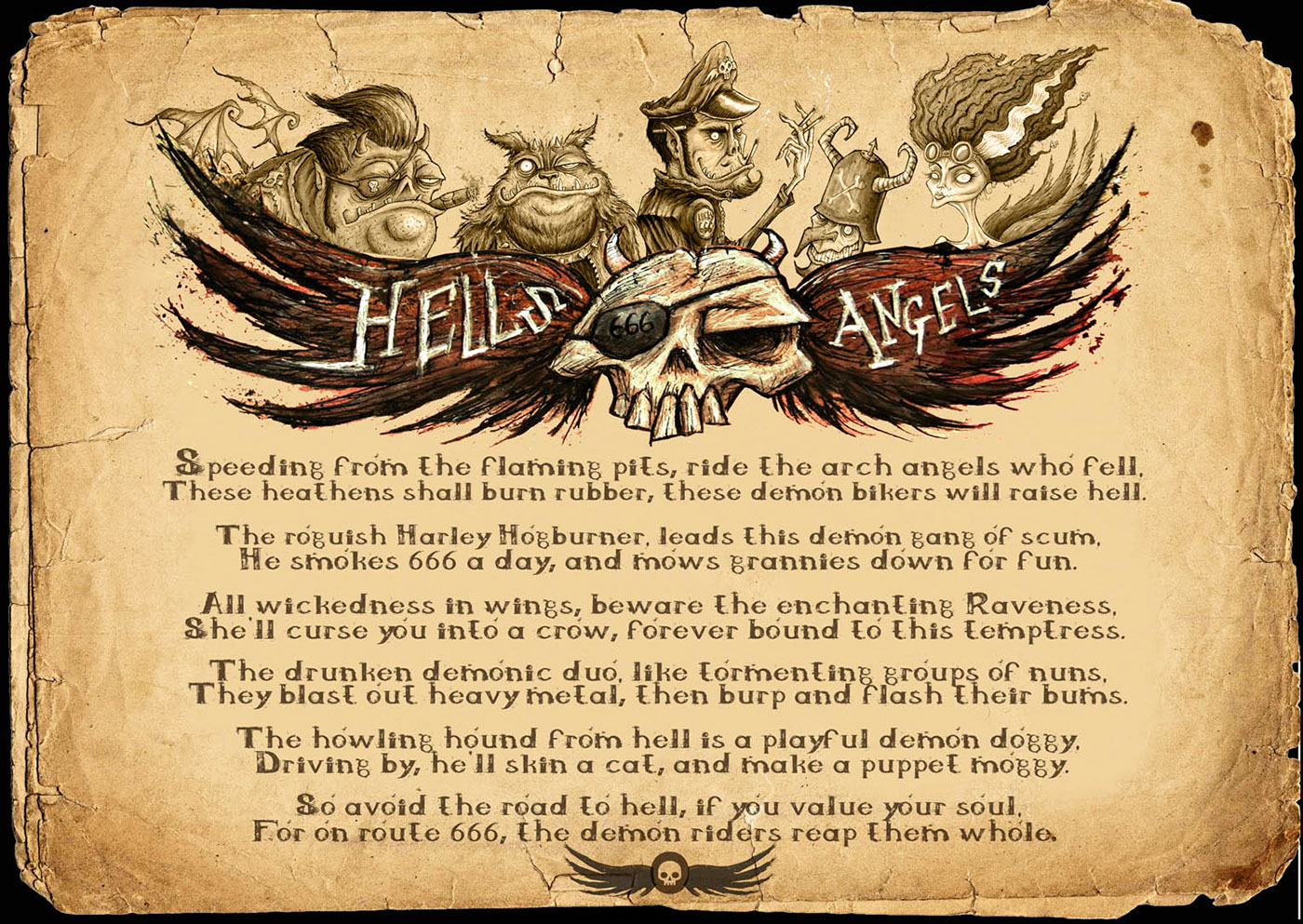Understanding The Hells Angels

Table of Contents
History and Origins of the Hells Angels
The Hells Angels Motorcycle Club's story begins in the post-World War II era of Southern California. Founded in 1948 in Fontana, California, the club's early members were largely comprised of veterans seeking camaraderie and a sense of belonging after their wartime experiences. This initial focus on brotherhood and shared motorcycle passion gradually evolved, transforming the club into a more organized and, often, criminal enterprise.
- Founding in 1948 in Fontana, California: The club's origins are rooted in the post-war social climate, with veterans seeking a sense of community.
- Early influence of WWII veterans and their camaraderie: The shared experiences of war fostered a strong bond amongst the founding members.
- Shift from a social club to a more organized, and often criminal, enterprise: Over time, the club's activities broadened to encompass illicit activities, leading to its notorious reputation.
- Expansion across the United States and internationally: From its Californian roots, the Hells Angels expanded its influence across the US and into numerous countries worldwide, establishing chapters in various regions.
The club's early years saw a gradual shift from motorcycle enthusiasts' gatherings to a more structured organization with a complex hierarchy. This transformation laid the groundwork for the Hells Angels' future activities and its enduring notoriety.
The Structure and Hierarchy of the Hells Angels
The Hells Angels operate with a rigid hierarchical structure, characterized by a complex network of chapters and mother chapters. This organizational model ensures a degree of autonomy within individual chapters while maintaining overall control and coordination across the entire organization. Understanding this structure is key to comprehending the club's operations and longevity.
- "1%" biker club status and its significance: This self-proclaimed designation signifies their defiance of mainstream society and law enforcement.
- Strict rules and codes of conduct within the organization: Members are expected to adhere to a strict code, fostering loyalty and discipline.
- The significance of the "Death Head" logo and other club insignia: These iconic symbols represent the club's identity and serve as a potent visual marker of their presence.
- Regional and international chapters with varying levels of autonomy: While individual chapters have a degree of independence, they ultimately answer to higher-ranking members and the overall club structure.
The Hells Angels' hierarchy, from prospects (those seeking membership) to full-fledged members and officers, reflects a strict chain of command. The elaborate system of patches and insignia reinforces the club's identity and internal cohesion.
Hells Angels Activities and Criminal Involvement
The Hells Angels' activities encompass a spectrum ranging from legitimate businesses to large-scale criminal enterprises. While some chapters may engage in seemingly legitimate activities, such as motorcycle sales and maintenance, the club's notoriety stems from its extensive involvement in organized crime.
- Motorcycle manufacturing and sales (legitimate business activities): Some chapters operate legitimate businesses, providing a veneer of respectability.
- Drug trafficking (cocaine, methamphetamine, etc.): Drug trafficking is a significant source of revenue for many Hells Angels chapters.
- Arms dealing and weapons trafficking: The illegal trade of weapons further enhances the club's criminal capabilities.
- Extortion, racketeering, and other organized crime activities: The Hells Angels employ various tactics to generate illicit income, including extortion and racketeering.
- Law enforcement efforts to infiltrate and dismantle the club: Law enforcement agencies worldwide employ various strategies to combat the Hells Angels' criminal activities, including infiltration and targeted investigations.
Understanding the full extent of the Hells Angels' criminal activities requires recognizing the complex interplay between legitimate and illegal activities. Law enforcement's ongoing efforts to dismantle the club's operations highlight the significant threat it poses to society.
The Public Perception and Media Portrayal of the Hells Angels
The Hells Angels' public image is largely shaped by media portrayals, often characterized by sensationalized narratives and stereotypes. This media representation, while sometimes accurate in depicting the club's criminal involvement, often overlooks the nuances of their internal structure and individual members' motivations.
- Common media stereotypes and tropes: Movies, books, and documentaries frequently depict the Hells Angels as violent, ruthless criminals.
- Instances of accurate and inaccurate media representation: While some media portrayals accurately reflect the club's criminal activities, others perpetuate harmful stereotypes.
- The club's attempts at image control and public relations: The Hells Angels have attempted to control their public image, but their reputation largely remains tarnished.
The discrepancy between the public perception and the reality of the Hells Angels necessitates a critical examination of media representations. While the club's involvement in criminal activities is undeniable, a complete understanding requires moving beyond simplistic stereotypes.
Conclusion
This exploration into the world of the Hells Angels provides a complex picture of a notorious motorcycle club. From their humble beginnings to their current global presence, the club's history is intertwined with both camaraderie and criminal activity. Understanding the Hells Angels requires looking beyond sensationalized media portrayals to grasp their intricate structure and diverse activities. By understanding their history, organization, and involvement in criminal enterprises, we gain a clearer picture of this controversial group. To learn more about this fascinating and complex subject, continue your research on the Hells Angels and their impact on society. Further investigation into the Hells Angels' activities and influence can provide a more complete understanding of this multifaceted organization.

Featured Posts
-
 North Myrtle Beach High Water Usage And Public Safety Implications
May 26, 2025
North Myrtle Beach High Water Usage And Public Safety Implications
May 26, 2025 -
 Jadwal Siaran Langsung Moto Gp Argentina 2025 Di Trans7 Panduan Lengkap
May 26, 2025
Jadwal Siaran Langsung Moto Gp Argentina 2025 Di Trans7 Panduan Lengkap
May 26, 2025 -
 Mathieu Van Der Poel Spitting Incident Spectator Faces 300 Fine
May 26, 2025
Mathieu Van Der Poel Spitting Incident Spectator Faces 300 Fine
May 26, 2025 -
 Le Frere Aine De Thierry Luthers Albert Est Decede
May 26, 2025
Le Frere Aine De Thierry Luthers Albert Est Decede
May 26, 2025 -
 Thierry Luthers Pleure La Perte De Son Frere Albert
May 26, 2025
Thierry Luthers Pleure La Perte De Son Frere Albert
May 26, 2025
Latest Posts
-
 Claim Your Millions Winning Lotto Ticket Sold At This Specific Location
May 28, 2025
Claim Your Millions Winning Lotto Ticket Sold At This Specific Location
May 28, 2025 -
 Could You Win The 202m Euromillions Jackpot A Realistic Look At The Odds
May 28, 2025
Could You Win The 202m Euromillions Jackpot A Realistic Look At The Odds
May 28, 2025 -
 Winning Lotto Ticket Location Announced Huge Prize Remains Unclaimed
May 28, 2025
Winning Lotto Ticket Location Announced Huge Prize Remains Unclaimed
May 28, 2025 -
 Rayan Cherki To Manchester United A Summer Transfer On The Cards
May 28, 2025
Rayan Cherki To Manchester United A Summer Transfer On The Cards
May 28, 2025 -
 202m Euromillions Jackpot A Winners Guide To Wealth Management
May 28, 2025
202m Euromillions Jackpot A Winners Guide To Wealth Management
May 28, 2025
